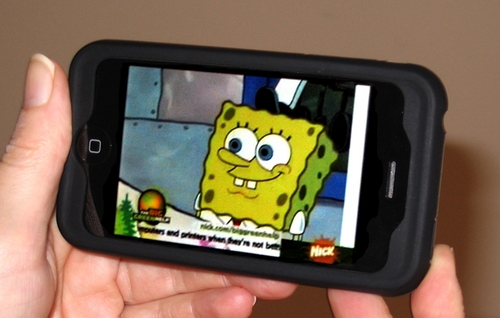The mobile video opportunity grows by leaps and bounds and with bigger mobile screens and faster wireless broadband networks, we can expect larger amounts of revenue to be derived from mobile video by carriers and content providers.
Dilithium Networks (www.dilithiumnetworks.com), founded in Sydney, Australia, offers converged video solutions, with customers in 60 countries on five continents. The company grew out of the participation on the ITU-T H.324/H.324M workgroup by Dr. Marwan Jabri, a company founder and CTO. Jabri spent nearly 20 years developing intelligent signal processing multimedia coding and transcoding algorithms, as well as some early protocol stack implementations of the H.324/H.324M standard. Today Jabri’s company, Dilithium carries on and has brought his work to commercial fruition, as it provides pioneering mobile video solutions for network operators, content owners, and aggregators across 2G, 3G, and WiFi networks. They’re the global market share leader in terms of their 3G-324M/H.324M/H.324 Protocol Stack and inventive Unicoding technology for high performance intelligent media transcoding. Indeed, Dilithium pioneered the field of 3G mobile video. There software can be found in many phones.
At CTIA Wireless recently, I ran into Paul Zuber, is the founding CEO of Dilithium. He told me that Dilithium is enjoying 400 percent growth year-over-year in the areas of mobile, broadband, Internet, mobile video and surveillance applications. 85 percent of their business occurs outside of the U.S. Some readers may know Dilithium as a world leader in multimedia gateways (said to be a 60 percent global market share) including their The DTG 3000 Multimedia Gateway family that provides a multimedia solution for cellular, IP, and PSTN convergence as networks evolve towards the IMS (IP Multimedia Subsystem) architecture. Others may be familiar with their Video Ringback Tone Solution, VT-Ring, or their Integrated multimedia gateway and service creation environment, ViVAS, or their QoS Video Telephony Probe for QoS, or perhaps their Video Refresh technology that can eliminate video corruption in mobile networks.
Zuber says there’s been increasing demand for anything related to supporting video and services, and social networks are starting to have an impact, as is the craze for user-generated content. Dilithium supports content adaptation so any content can travel to and be experienced via any codec to any device – it’s all an outgrowth of their transcoding, transrating, and transizing expertise. They have end-to-end solutions for 3G networks and a powerful service creation platform — Zuber says they can roll new services in just six weeks. This is pretty remarkable, especially when you consider that the modern network is a jumble of differing standards, codecs and bit rates. Dilithium’s technological expertise also extends from mobile (2.5G, 3G, EDGE, Smartphones, WiFi) to set-top boxes. The customers themselves, of course, are agnostic to access methodology, they just want somebody like Dilithium to make it easy for them to access content, and for it to be a high-quality experience, regardless of whether it’s delivered by H.264, H.263, Flash, Windows Media, Quicktime, or what have you.
“We enable protocol translation,” says Zuber, “but bringing IP to the mobile world is a tougher proposition. The U.S. is still an emerging market. Things are more advanced on the Internet than on wireless. Still, we’ve had wins with many Internet aggregators and carriers, and they’re starting to launch services. We’ve helped Vodafone, for example, as well as China Telecom, SingTel, and so forth. Pricing plans and business models are starting to take shape. Our cash flow is positive and we’re profitable.”
I got a chance to demo the technology on an iPhone and was blown away by the quality of the stream over the AT&T 3G network. I happened to be driving in a portion of Connecticut with poor cellphone coverage and was surprised that the stream kept playing in areas where I remember having problems talking. I would imagine most users would be impressed with this technology as well and pay serious money for the ability to stream live TV to their cellphones. Obviously this capability exists today but the screen size of an iPhone makes it an especially compelling viewing experience and I would imagine AT&T should be in a big rush to roll this out to the masses.
I would of course precede all programming with a stern warning about the dangers of watching TV as you drive which as you can imagine can be quite distracting as it was to me. 😉



Kam Singh
November 14, 2009 at 7:28 amWe found a Dilithium Networks Analyzer at a public auction in the UK.
It had been lost in transit and submitted to the auction by international parcel company – UPS.
We contacted Dilithium Networks who were not happy because UPS had only paid them £xx GBP compensation and they claimed it was worth £xx,xxx GBP at the time.
For the whole story visit: dilithiumnetworks.tv
Related Articles
GTT Communications: Pioneering the Future of Managed Network and Security Services
NTIA Announces Key Details for $42.5B BEAD Program: Emphasizing Digital Equity
Why Teaching STEM to Inner-City Kids is Like Fracking For Untapped Potential